equine anatomy, behavior, & retraint exam 2 review
1/44
There's no tags or description
Looks like no tags are added yet.
Name | Mastery | Learn | Test | Matching | Spaced |
|---|
No study sessions yet.
45 Terms
the vibrating, positive noise horses make to encourage other horses to come closer is the
nicker
horses are handled primarily from
the left side
the stifle joint in a horse is the equivalent of the human
knee
Filling the teeth of a horse to remove hooks, points, and other sharp edges is known as dental
floating
where is the gaskin located on the horse
between the stifle and the hock
metacarpal/metatarsal #2 and #4 are more commonly known as
splint bones
you are asked to get a horse out of its stall for the veterinarian. As you approach the horse you observe that its ears are pinned back against its head, the eyes are closed to slits, and the tail is swishing. the most like indicates that the horse is
angry
equine dentistry is typically performed with the horse in what position
standing
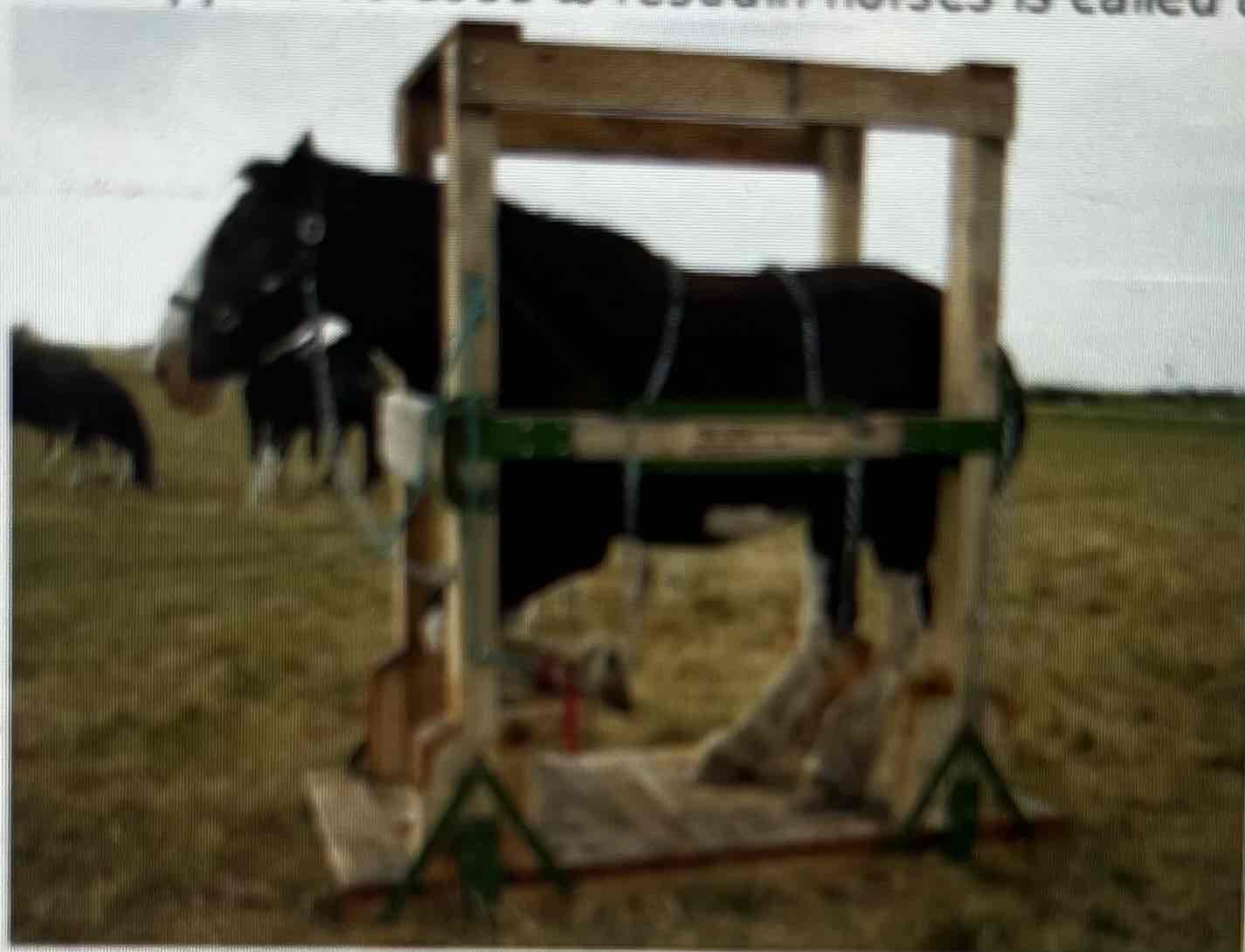
this apparatus used to restrain horses is called a
stock
many of the bad behaviors that horses developed due to boredom or lack of exercise are collectively known as
stable vices
on ___ days, working with horses can be particularly challenging
windy
restraint of which part of the horse is the most important to the control of the animal
head
as you approach a horse you see that its head and neck are extended towards you, the ears are pricked forwards and the eyes focused on you. this most likely indicates that the horse is
curious
a client calls you to say than an object was found in their horses feed bucket that looks like a tooth. the horse is 3 years old. the object is most likely a
dental cap
the first step in restraining a foal is
to catch and restrain the mare
what is the area along the toppling that joins the back of the croup
the loin
horses do not have
a gallbladder
the number one act of aggression seen in domestic horses is
biting
which best describes the withers
a prominent ridge where the neck and back meet
before elevating the leg of a horse, you should
position the horse in a square stance
the bony prominence on the top of the skull between the ears is called the
poll
what are the normal TPRs of the adult horse
Temp: 99-101.5 HR: 28-44bpm RR: 6-12rpm
when leading a horse
hold the lead rope loosely in your hand
natural twitches include the
ear twitch
most horses have ___ pairs of ribs
18
Metacarpal/Metatarsal #3 is most commonly known as a
Cannon bone
this feature allows the horse to rest while standing with little muscular activity
the stay apparatus
if you are the person responsible for controlling the horse during performance of a procedure, you should stand
on the same side as the person performing the procedure
when properly applied, mechanical twitches are typically effective for
20-30 minutes
when placed in a fearful situation, a horse might flee because it is a ___ animal
prey
when restraining a foal positioned in lateral recumbency
grasp the legs above the carpus or tarsus
what is the joint between the forearm and the cannon bone
the knee
if you are restraining a horse in which the veterinarian is working on a laceration on the right hind leg and the horse becomes fractious you should
pull the horses head towards you
mechanical twitches should not be used on
the lower lip, ears, foals
the most natural response of a horse held in a fearful situation is to
flee
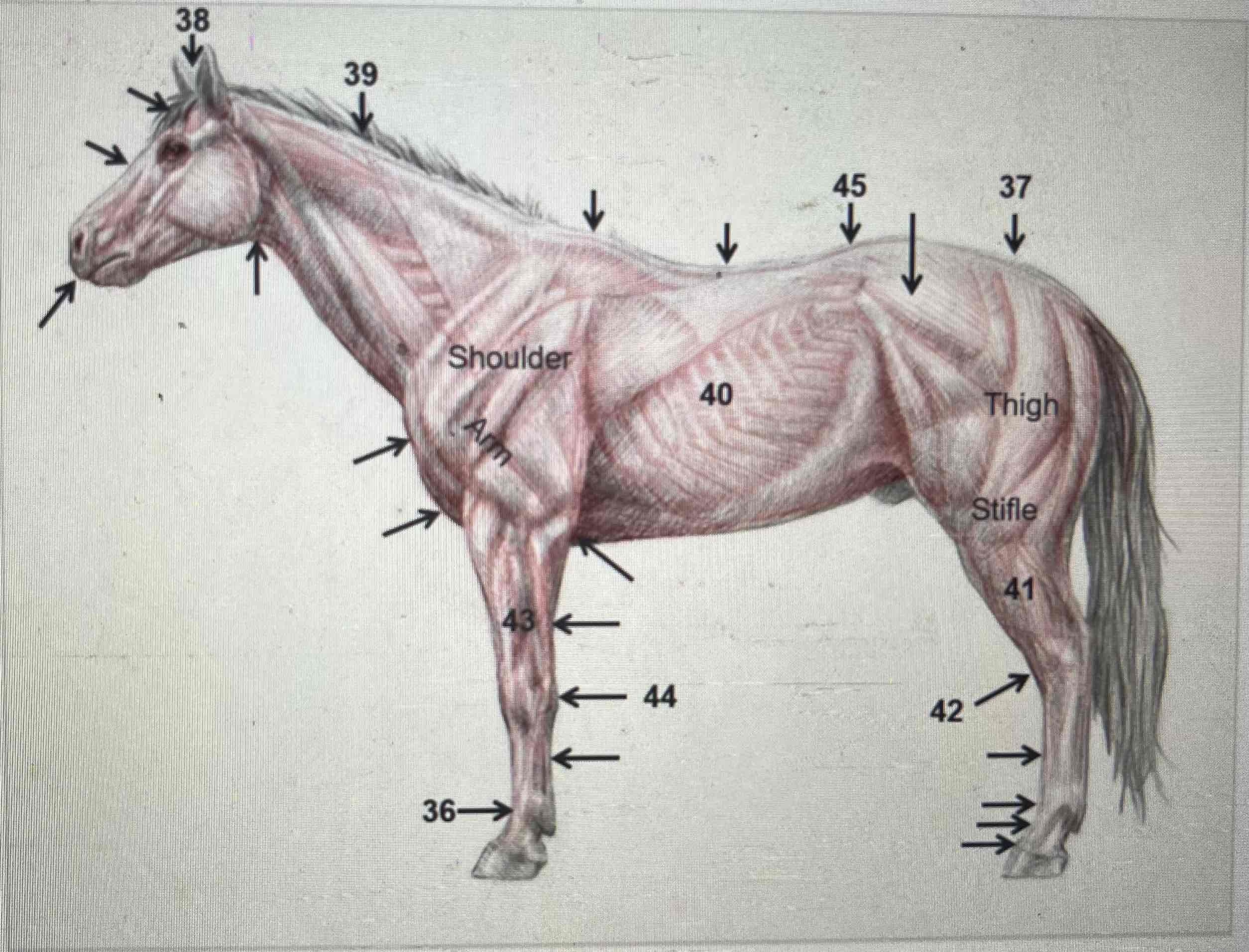
36
fetlock
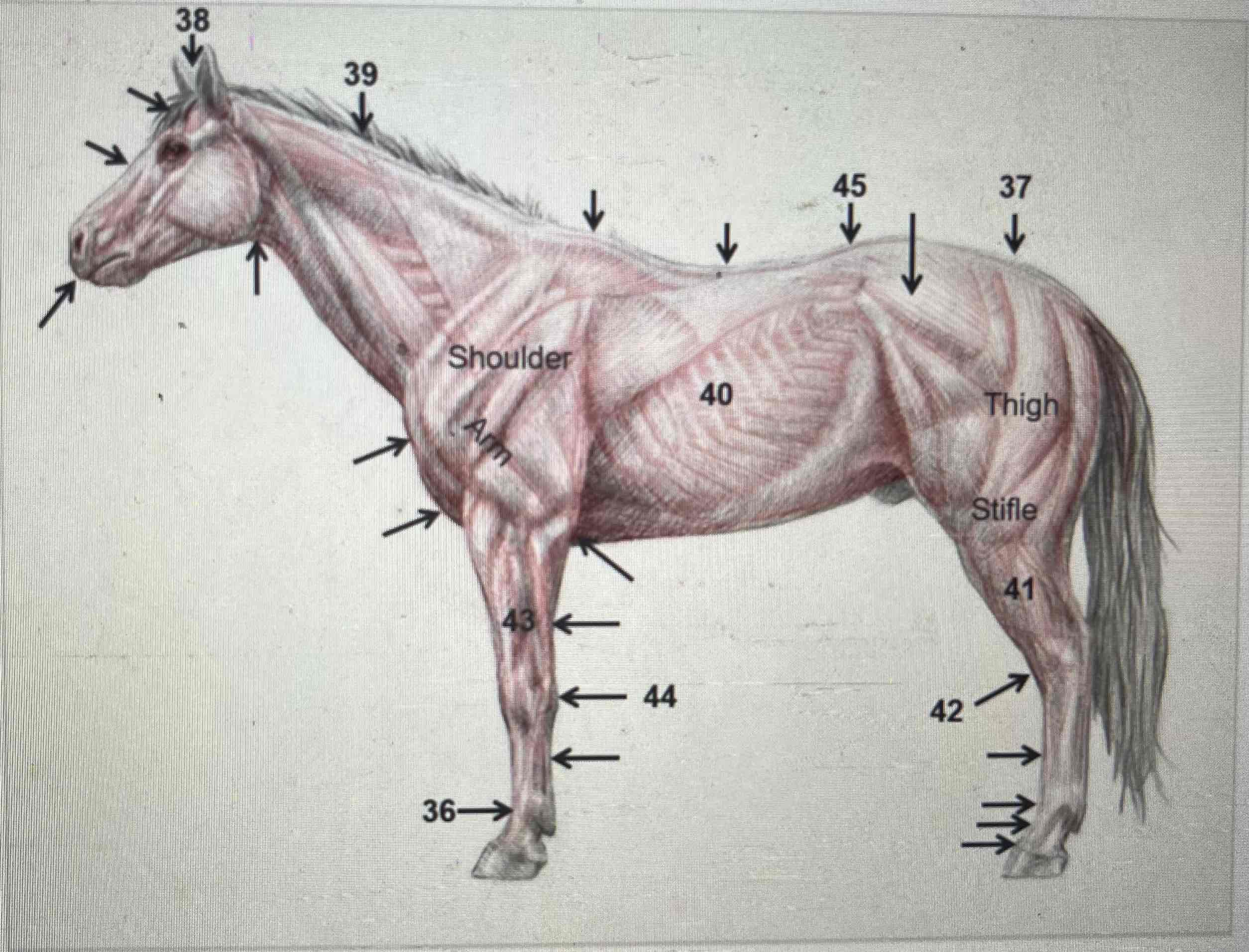
37
rump/croup
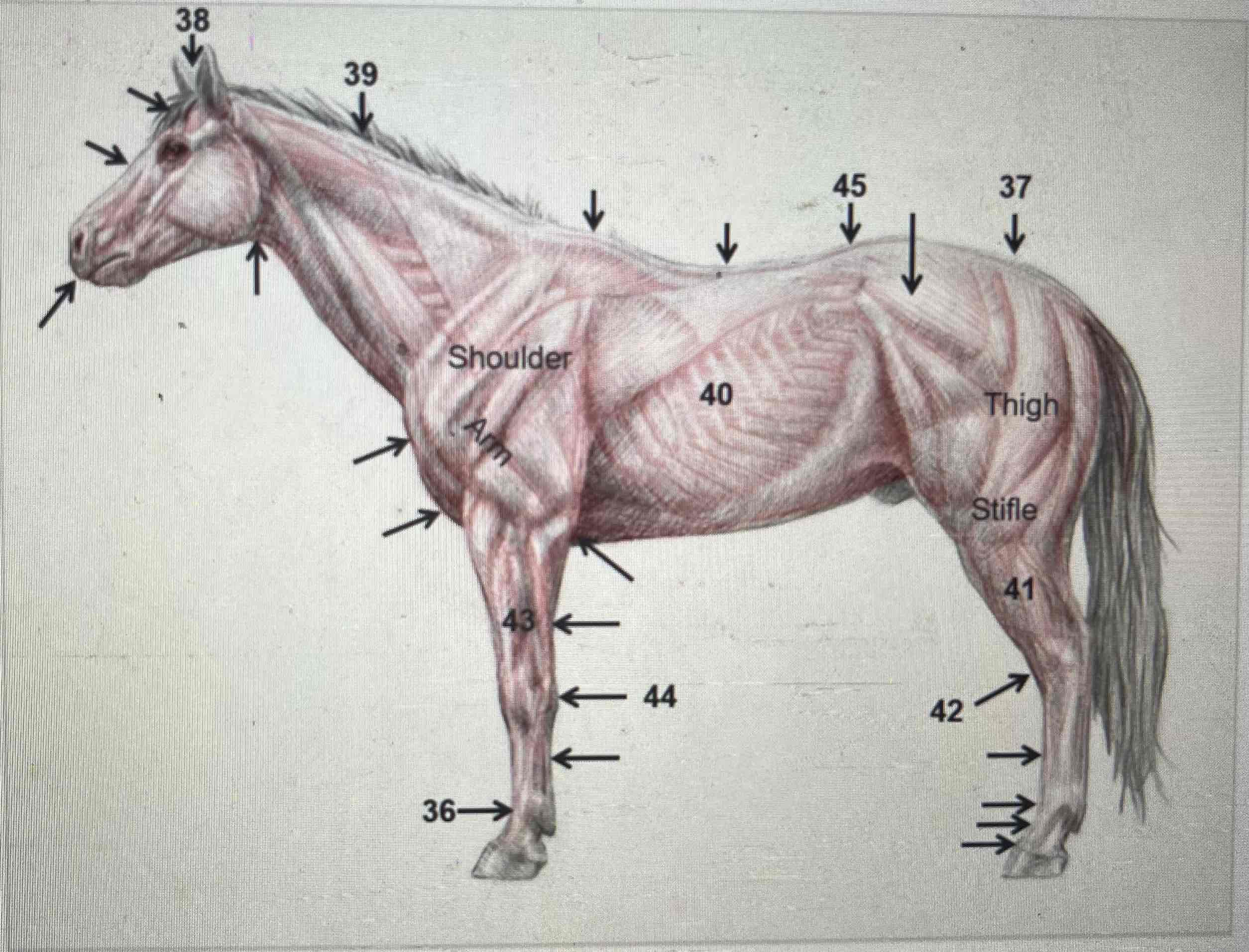
38
poll
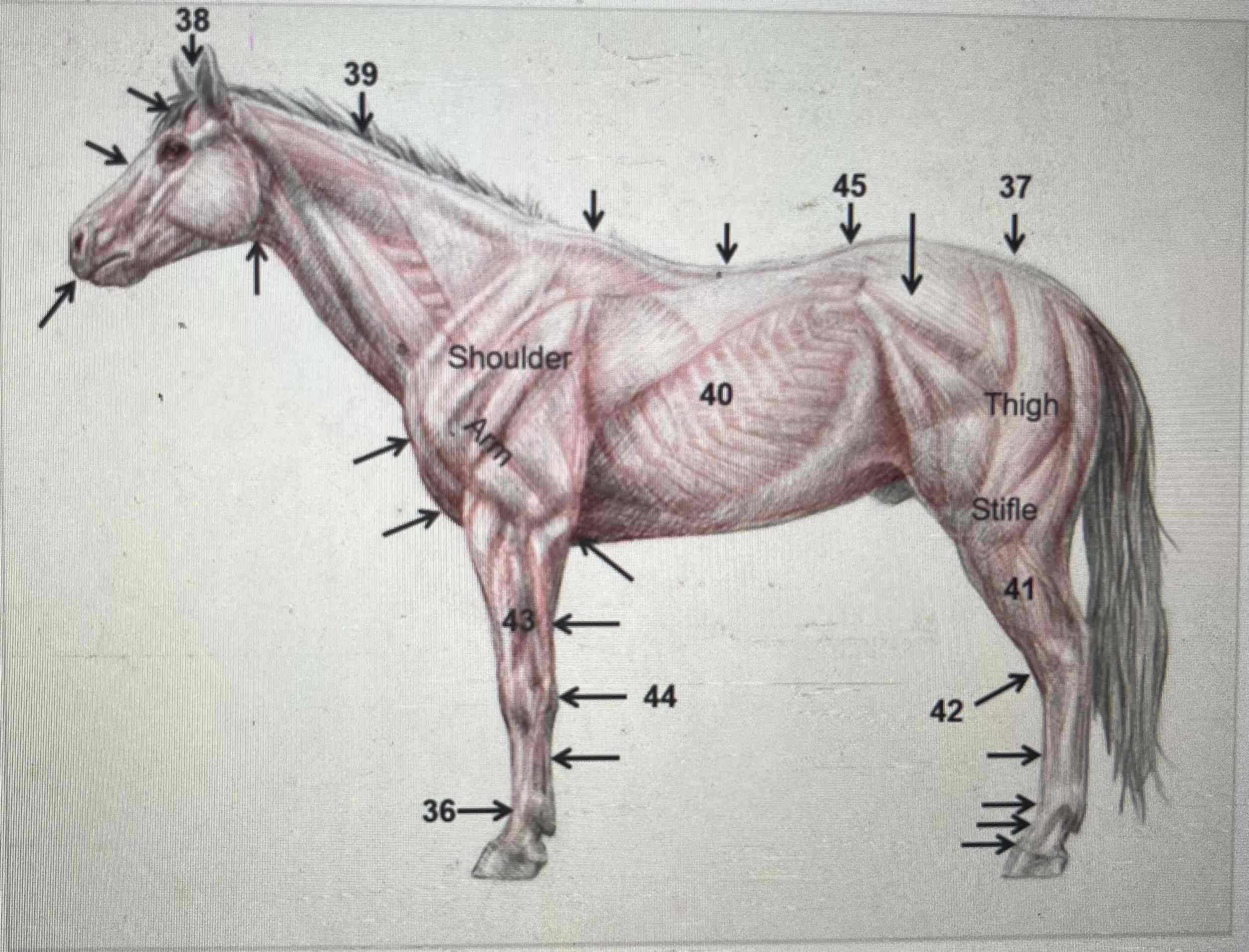
39
crest
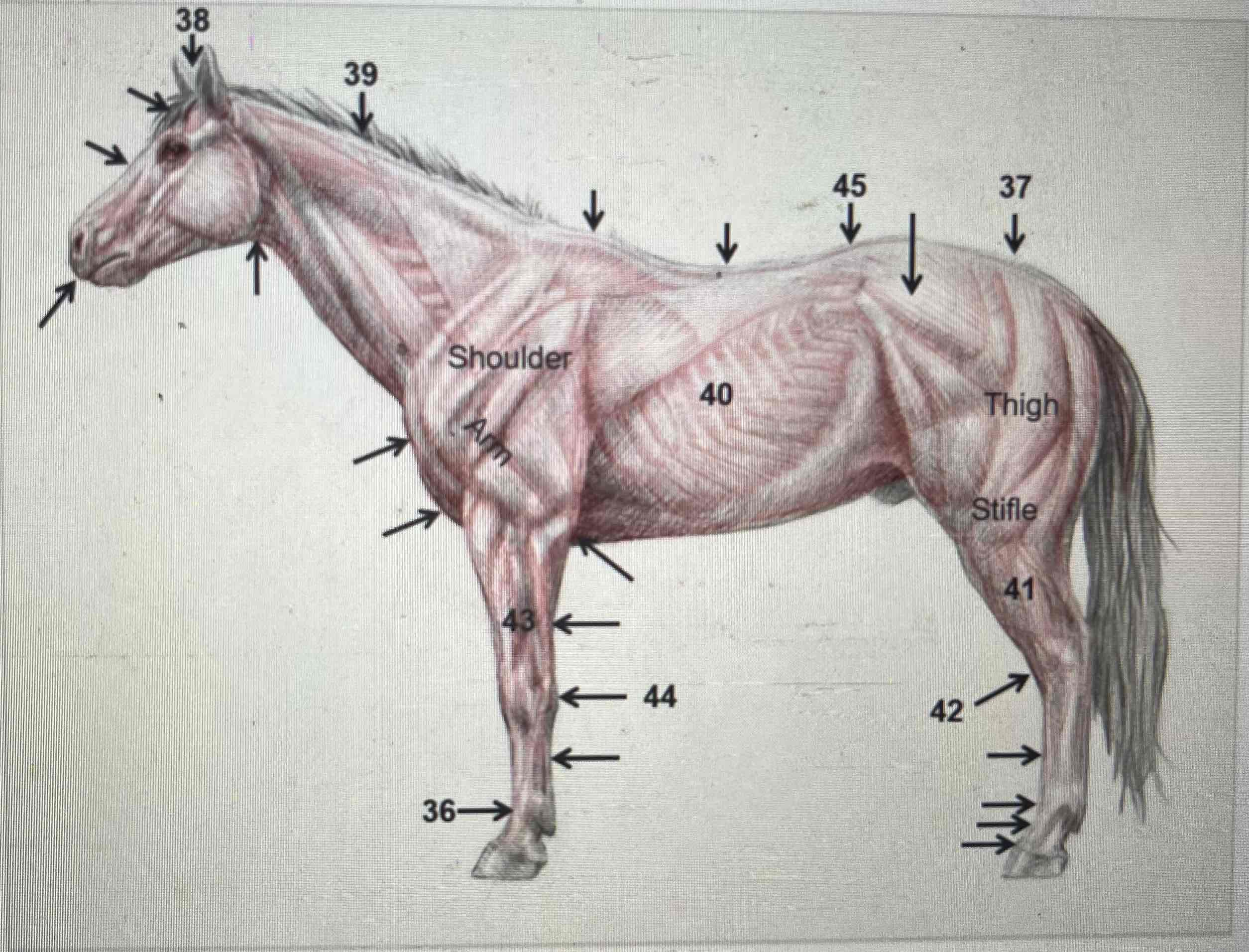
40
barrel
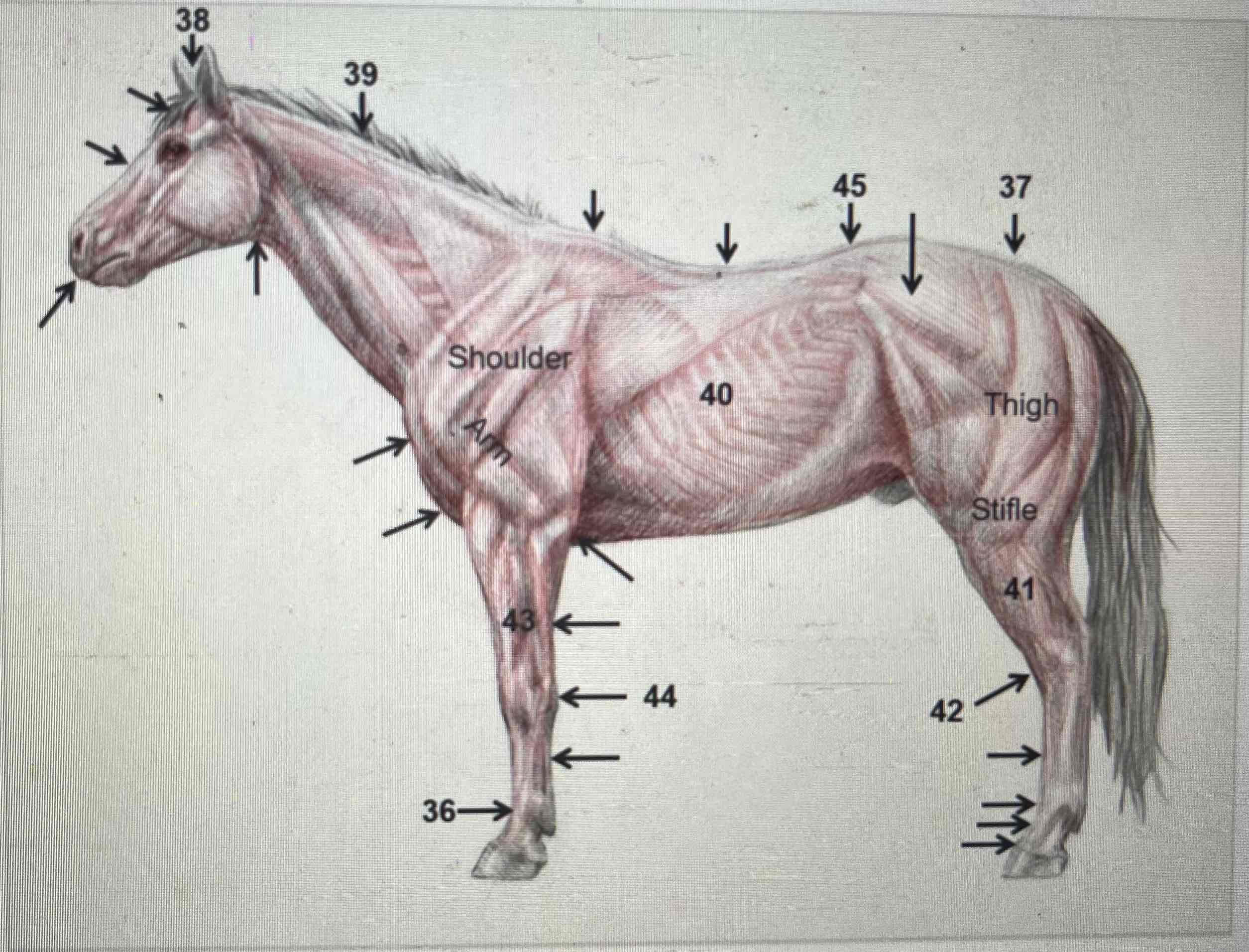
41
gaskin
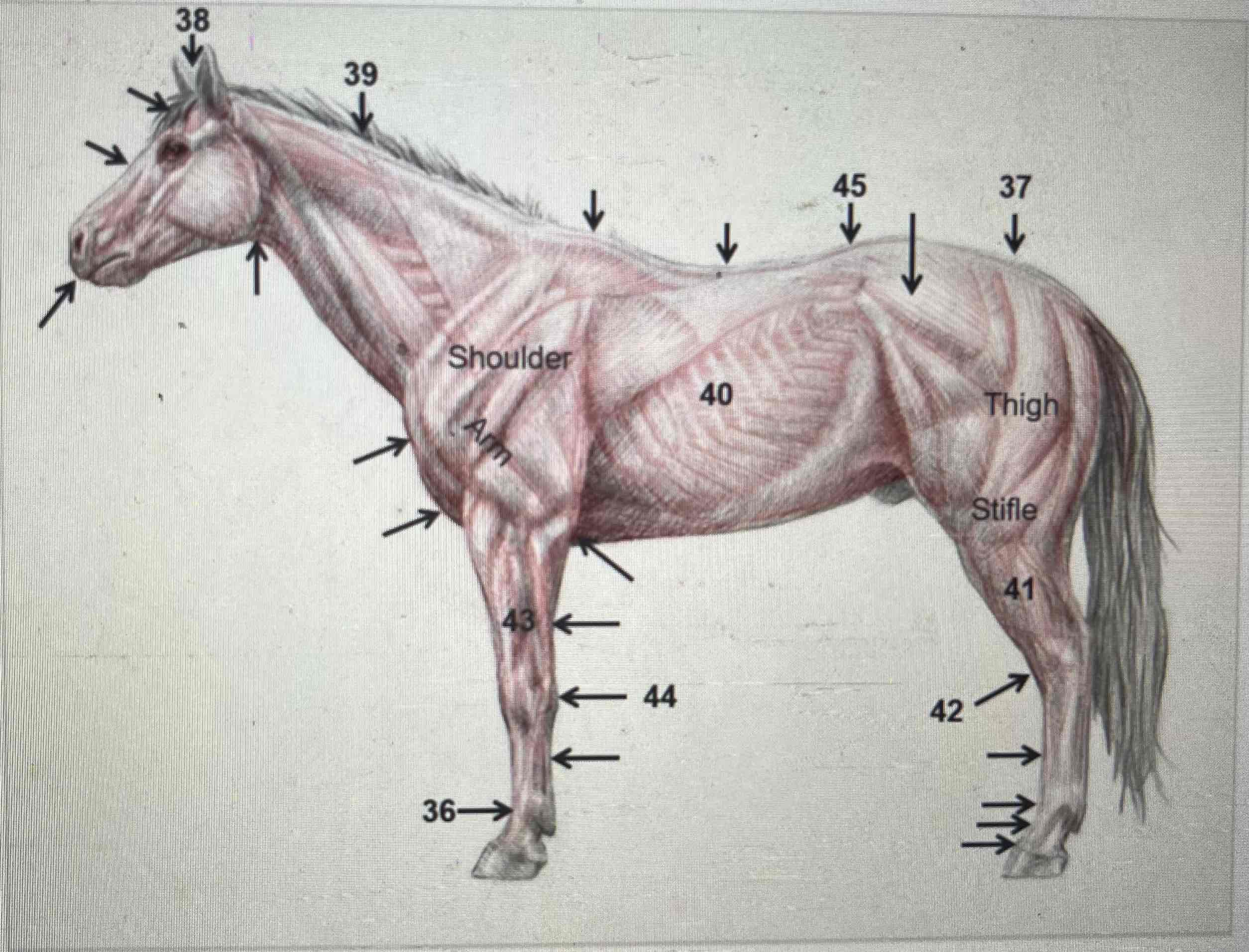
42
hock
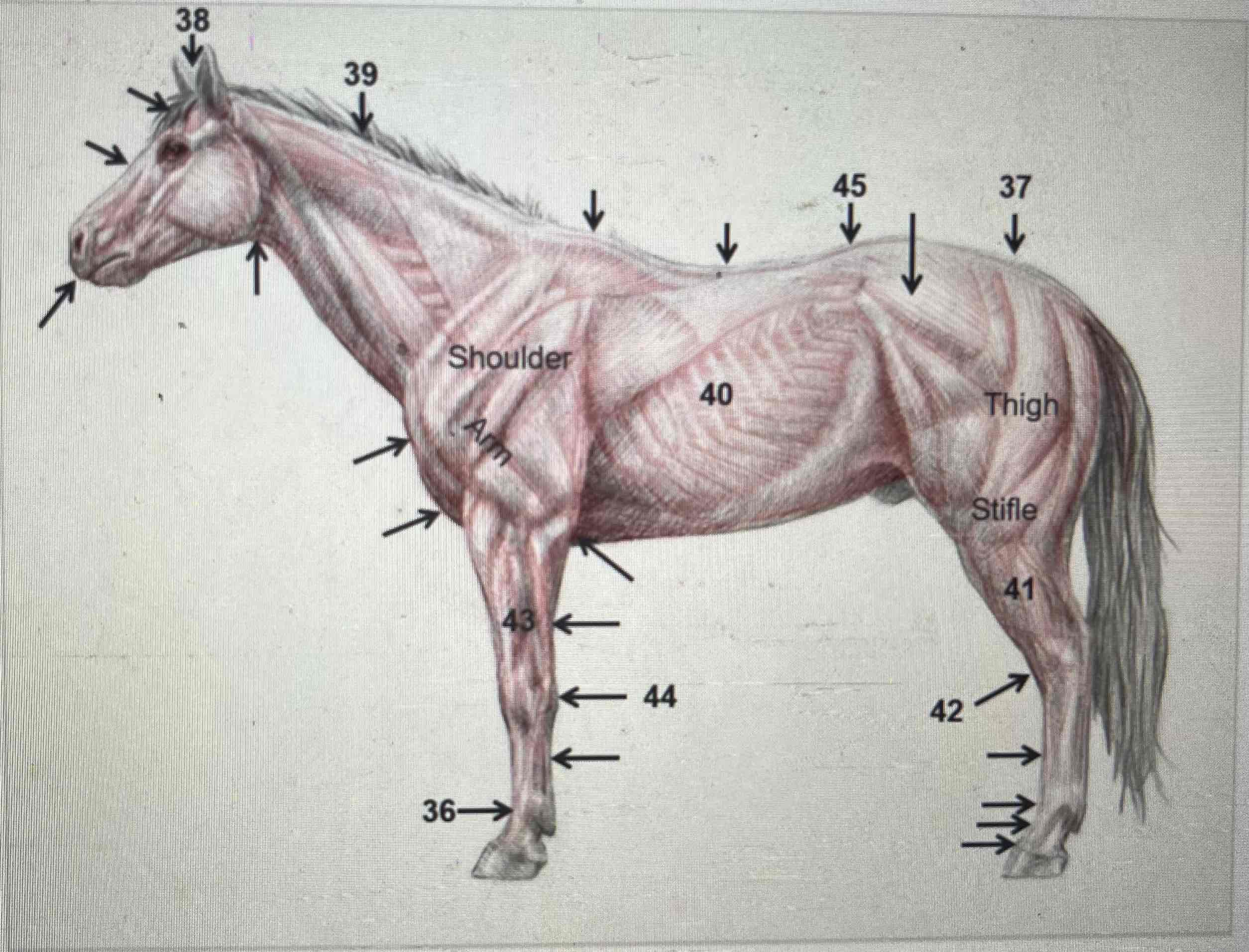
43
forearm
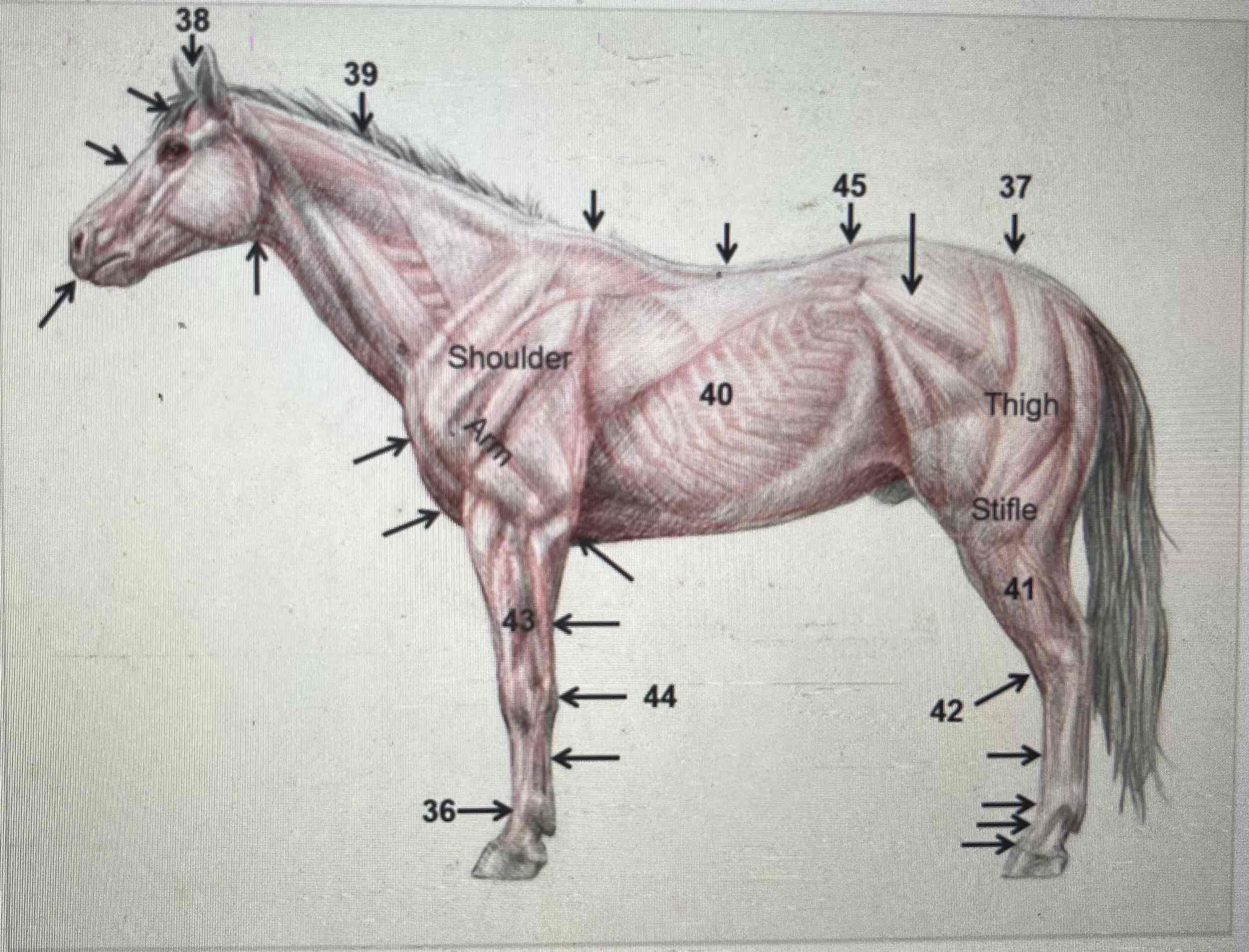
44
knee

45
loin